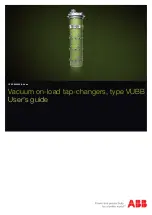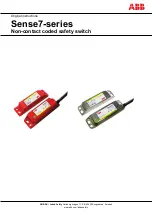
INSTALLING AND OPERATING THE KELCO
C15 SERIES FLOW SWITCH
Please read these installation and operating instructions fully and carefully before installing or servicing this Flow Switch. The C15 series
flow switch is a mains voltage device. Death or serious injury may result if this switch is not correctly installed and operated. All
electrical work on this switch must be performed by a fully qualified and licensed Electrician.
WARNING
INSTALLATION
The C15 inline flow switch can be installed in any location in
vertical or horizontal pipes. In vertical pipes flow can be either
upward or downward through the switch. Where possible,
install a union on the inlet and outlet of the flow switch to
allow easy removal for cleaning and servicing. Ensure the flow
switch is oriented correctly to direction of flow. The male
threaded end of the switch is the inlet. When installing, make
sure no thread tape or other foreign matter from the
installation becomes entrained in the switch. Also ensure no
foreign matter can enter the flow switch from tanks or
pipework. Where scale or other material may be present
always install a Y-strainer in the inlet pipe directly before the
switch. The electrical module that saddles the flow switch
body can be removed if required to allow the body of the
switch to be screwed into tight locations, for example into the
discharge port of a pump. To remove the electrical module
undo the 4 self-tapping screws that secure the two halves of
the module together.
CHECK VALVES
Many applications will benefit from a non-return valve in the
pipework directly before the C15 inline flow switch. The flow
switch is not designed to operate as a one-way valve and
rapid or high pressure flow reversal, such as water hammer
can damage the piston in the flow switch. A simple non-return
valve adjacent to the flow switch will reduce the possibility of
damage to the flow switch due to flow reversal.
ENVIRONMENTAL LIMITATIONS
This flow switch is suitable for use with hot or cold liquids up
to 90ºC. Systems can be steam sterilized at 100ºC for short
periods without damaging the switch. Note that the
continuous switched power of the C15-R model must be
linearly reduced at elevated temperatures. See the notes on
electrical data below.
REFITTING ELECTRICAL MODULES
The electrical module of the C15 inline flow switch can be
oriented to suit the application. It can be mounted in either
direction on the switch body and can be rotated around the
switch body to any required position. All modules are normally
off switches that turn on in response to flow. Reversing the
orientation of the electrical module does not reverse the
action of the switch. To refit a module to the switch body, fit
and tighten the 4 stainless self-tapping screws. Do not place
any material such as grease, glue or packing material between
the electrical module and the switch body, to do so may alter
the heat flow characteristics of the switch and possibly lead
to overheating or premature failure.
FLOW SENSITIVITY AND PISTON INSTALLATION
Switching point and sensitivity to flow depends on the orientation of the switch, liquid velocity, viscosity and piston clearance.
To give users as wide a choice as possible, a non-magnetic piston retainer is supplied with the C15 flow switch. With the
switch mounted vertically and with flow passing upward through the switch, the non-magnetic piston retainer reduces the
switch on flow rate by a factor of 2. That is, it makes the switch approximately twice as sensitive to flow.
Standard switch (as supplied) installed
horizontally or vertically, with the magnetic piston
retainer fitted.
Switch installed vertically with flow passing
upwards through the switch body, and with the
non-magnetic piston retainer fitted.
Switching point on a
slowly increasing flow
Switching point on a
slowly decreasing flow
0.35 Litres per Minute
0.30 Litres per Minute
Switching point on a
slowly increasing flow
Switching point on a
slowly decreasing flow
0.15 Litres per Minute
0.10 Litres per Minute
Note : Maximum recommended flow rate through the C15 flow switch is 30 Litres per Minute
Note: The data shown in the table above refers to water at ambient temperature as the test medium. Increasing fluid viscosity will
decrease the switch on points. Decreasing the fluid viscosity will proportionally increase the switch on points.






















